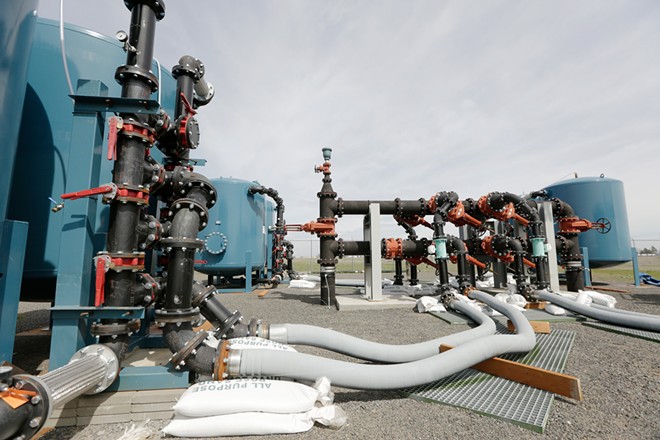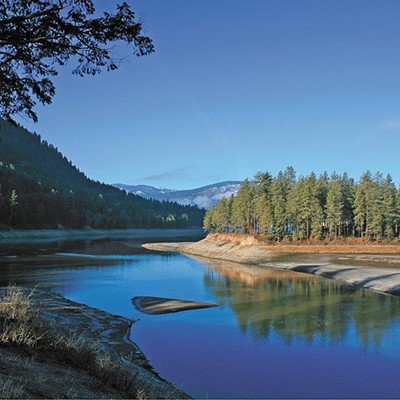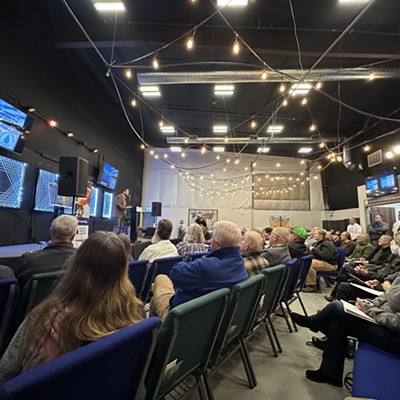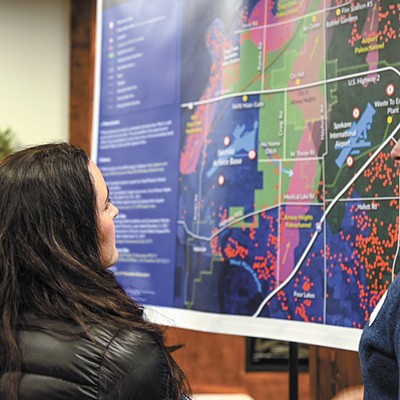
More than fours years after Airway Heights learned its wells are contaminated, the city has proposed what it hopes is a long-term solution to provide safe drinking water to its residents.
Rather than try to treat the water that's contaminated with chemicals once used to fight fuel fires at Fairchild Air Force Base, the city's pitch is to shutter its West Plains wells and drill new ones in the Spokane Valley Rathdrum Prairie Aquifer. But the state first needs to approve what Airway is calling a "transfer" of water rights there.
The contamination in question involves a family of chemicals called PFAS (per- and polyfluoroalkyl substances), which are man-made substances that can build up in the environment and in people over time. They may cause fertility issues, interfere with hormones or immune response, or make people more likely to get certain types of cancer, according to the Environmental Protection Agency.
They've been used in everything from furniture stain guards to grease-resistant fast-food wrappers, and the most common compounds would be found in the blood of nearly every person in the United States. But Airway Heights residents who participated in a Centers for Disease Control and Prevention study in 2019 had PFAS blood levels that were six to 60 times the national average.
Early on, Airway Heights looked into the possibility of treating the contamination. The Air Force paid more than $1 million to install a filtration system in 2018 on one of the city's wells to test the method. But the outdoor system can only run in warmer months, and while it's somewhat effective, it's not clear that the system would be able to filter the water to human health and safety limits that are being developed for PFAS at the state and federal levels, says Albert Tripp, Airway Heights city manager.
"As a community, we don't want to be responsible for long-term treatment of a water supply for something we didn't create," Tripp says. "At a fundamental level, water is as basic to a community as anything. ... That's why we've been charting a path out, back to a level of wholeness."
People shouldn't have to wonder, "Is my water safe to drink?" Tripp says.
With all that in mind, the city has worked with engineers to draft a new solution: Airway Heights wants to stop using its contaminated aquifers altogether and instead draw water from the Spokane Valley Rathdrum Prairie Aquifer. The massive underground water store, stretching from Spokane through North Idaho, supplies a huge swath of the Inland Northwest.
Since the contamination in Airway Heights was discovered, the city has been using water from the Spokane aquifer on an emergency basis through two interties connecting to the City of Spokane's supply.
Drilling wells to that same water source elsewhere, rather than continuing to pay Spokane, would save Airway Heights residents more than $30 million over the next 40 years, Tripp says.
"This entire ordeal has had a significant financial impact on the Airway Heights community," Tripp says. "We're talking about an area of about 10,000 people who've paid well over $7 million to $8 million since this happened in 2017, for something they didn't start and they didn't contribute to."
But not everyone is convinced that allowing the city to draw from that aquifer, which connects with the Spokane River, is a good idea.
To get permission for new wells, the city has applied for water rights along the Spokane River on the Spokane Valley Rathdrum Prairie Aquifer. It is currently undergoing a State Environmental Protection Act, or SEPA, process for that application, which includes several opportunities for the public to weigh in.
Because of issues with the Spokane River getting so low at times that it can't stay cool enough for fish to stay healthy or protect the rights of existing users, the state Department of Ecology adopted a minimum instream flow rule in 2015.
"New water rights cannot impair existing users," says Jaime Short, manager of water resources for Ecology's Spokane office. "Any rights we issue would be conditioned to that flow and would have to stop when flows drop."
But municipal water rights can't just be forced to stop, since people rely on water for health and safety, she says.
So in order to be treated like other senior water rights holders, Airway Heights has to make its case that it can mitigate the usage on the Spokane aquifer by "transferring" its existing water rights.
"The only way this package works is because of the mitigation they can bring to the table," Short says.
For the application, hydrologists and engineers modeled how the city's West Plains aquifers flow through an underground paleochannel and ultimately recharge the Spokane Valley Rathdrum Prairie Aquifer. A 125-page "Alternative Groundwater Supply Assessment" estimates it takes four to 15 years for water from the city's current sources to reach the larger aquifer.
"The only way this package works is because of the mitigation they can bring to the table."
tweet this
But Spokane Riverkeeper Jerry White thinks the city should be required to do a full environmental study to further explore "that supposed connection" and ensure the West Plains water would truly make up for the new wells, since the Spokane aquifer and the Spokane River are interconnected.
"I don't want to come off as unsympathetic to the fact that the city of Airway Heights has PFAS in their drinking water — that's a cruel, twisted fate that they were dealt," White says. "But I also think we've got a river in trouble. It often doesn't meet its instream flow in the summer anymore."
Spokane Mayor Nadine Woodward and City Council President Breean Beggs also wrote a letter calling on Airway Heights to do a full study of environmental impacts. They question if a 1:1 water rights transfer is allowed under state policy.
The river is tracked in water years that run from Oct. 1 to Sept. 30. For water year 2020 (October 2019 through September 2020), the Spokane River had 12 days below the minimum instream flow, says Patrick Cabbage, a senior hydrogeologist for Ecology. For water year 2021, there were 66 days below that minimum flow.
While that may sound like a lot, Cabbage says it's not unusual for the river to see 50, 60 or even 100-plus days under that minimum flow every five to 10 years. While the instream flow rule has only been in place since 2015, water data going back to the late 1800s shows many examples of years in that range, he says.
"The aquifers that Airway Heights has been drawing from are all tributary to the Spokane Valley Rathdrum Prairie Aquifer. They've been using that water for decades," Cabbage says. "There's kind of the temptation to look at this as a new water use, but this is a mitigated water right. They have the authority to use this water already, we're basically just moving the location where they're drawing it from."
Airway Heights' city engineer Dennis Fuller says he doesn't think it would be appropriate to conduct a full environmental study as White suggests.
"I think it's reasonable for the city to rely on the mitigation plan in the determination that there's no impact to the aquifer or the river," Fuller says. "Frankly, I don't know that whatever we do would provide any more information than we currently have."
If the water rights application is approved, and another SEPA process for the infrastructure moves forward, the city would drill new wells and build about six miles of water pipes and pumps. That infrastructure would stretch from a spot near Seven Mile Road to connect with the city's northernmost existing water infrastructure near Deno Road, Tripp says.
The cost will likely run $22 million to $24 million, Tripp says, with much of that already funded with money from the Washington State Legislature, and federal assistance also on the way.
Paying Spokane for water over the next 40 years, on the other hand, would cost about $53 million.
But more important than the cost considerations, Tripp says, is a sense of safety for residents, who should have confidence in their water supply.
"We want to set this community up to not have to continue to contend with chemicals affecting the water supply," Tripp says. ♦
























